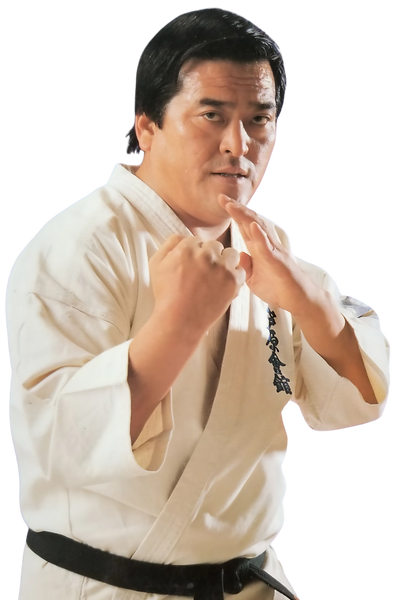Early Life and Introduction to Budo
As a child, Hideyuki Ashihara was full of energy and often found himself in fights. At the age of 10, he discovered discipline through Kendo, his first taste of Budo. In 1960, he moved to Tokyo to work, and in 1961, he stepped into Masutatsu Oyama’s Kyokushin Honbu Dojo. He was immediately drawn to the realism and toughness of Kyokushin training and immersed himself completely in the art.
His determination and relentless spirit quickly set him apart. On March 26, 1964, at only 19 years old, he earned his Shodan (1st Dan) — already known in the dojo as an unbeatable fighter in kumite.
Rising as a Kyokushin Instructor
In 1966, Ashihara was appointed as an instructor at the Kyokushin Honbu Dojo. His skill and charisma earned him respect, and his reputation as a fighter and teacher spread quickly. Sent to the town of Nomura, he built a strong base of students before expanding to Yawatahama and later to Matsuyama, where his teaching style attracted thousands.
During this time, he began shaping the revolutionary concept of Sabaki — using circular movement, positioning, timing, and stance to control and neutralize an opponent. This approach would later become the foundation of Ashihara Karate.
Founding of Ashihara Karate
In 1978, after years of dedication to Kyokushin, Ashihara chose a new path. He faced resistance for his rapid growth and innovative methods, which ultimately led to his expulsion from the Kyokushin organization. Rather than giving up, he embraced the challenge and, in 1980, established the New International Karate Organization (NIKO) – Ashihara Karate Kaikan in Matsuyama.
From this Honbu Dojo, Kancho Ashihara introduced a Karate system that was practical, efficient, and adaptable. The three pillars of his teaching became:
- Preparation and Circular Movement – represented by the Ashihara emblem.
- Timing and Distance (Maai) – understanding the flow of combat.
- Stable Stance and Mobility – the ability to move freely in any situation.
His method of Sabaki (whole-body movement) set Ashihara Karate apart from all other systems, combining powerful strikes with intelligent evasion and control.
Influence and Legacy
Kancho Ashihara’s students carried his vision worldwide. Among them were:
- Joko Ninomiya, later founder of Enshin Karate.
- Kazuyoshi Ishii, founder of Seidokaikan and the K-1 Kickboxing circuit.
- Makoto Hirohara (Yoshida), who went on to establish Shintaiikudo Karate.
Through them and countless others, his philosophy of Sabaki spread across the globe, influencing Karate, Kickboxing, and modern martial arts competition.
Final Years
In the late 1980s, Kancho Ashihara was diagnosed with ALS (Lou Gehrig’s Disease). Despite the progression of his illness, he continued to teach, write, and inspire his students with unshakable spirit. On April 24, 1995, at the age of 50, he passed away in Matsuyama. Over 1,000 people attended his funeral, paying respect to the man who had transformed Karate for a new era.
Remembering Kancho
Kancho Hideyuki Ashihara is remembered not only as a fighter and instructor, but as a visionary founder who gave Karate a new face through the principle of Sabaki. His teachings continue to guide Ashihara Karate practitioners worldwide — keeping alive the spirit of innovation, discipline, and adaptability that he embodied.
“Karate must be practical. It must work in real situations. Sabaki is the key.” – Kancho Hideyuki Ashihara

